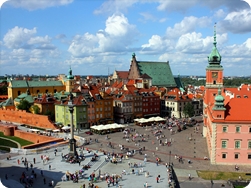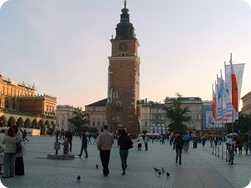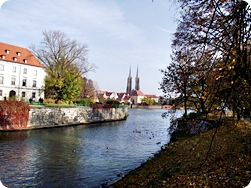
History of Wielkopolska
History of Wielkopolskie The terminology concept of Wielkopolska “Polonia Maior” (Greater Poland meaning older, more important) officially appeared in 1257 during the district partition of Poland. The name Wielkopolska commenced to be commonly used in the XV century. From a historical point of view, Wielkopolska encompasses lands of the former territory of the Polanie tribe who played the most significant role in the process of creating the Polish nation.
The first capital of Poland was probably in Gniezno and the region of today's Wielkopolska constituted the centre of the country's political life. In 1038, Gniezno, however was destroyed to such a degree, that Prince Kazimierz Odnowiciel (the Restorer) decided to move the capital of the nation to Kraków.
Between the XII and XIV centuries, Wielkopolska was a district princedom. During the period preceding the partition of Poland, Wielkopolska was recognized next to Maopolska and the Ukraine as one of the three unifying components of the Crown (of Poland) and it was the widest scope in which the name of the region was used. At the beginning of the XIV century, the invasion by the Teutonic Knights desolated almost half of Wielkopolska.
The region began its slow economic renewal as late as XV century thanks to King Władysław Jagiełło who directed the country's entire trade from the East to the West through Poznań. This made the city become one of the most significant trade centres in Europe. It also created good ground for the development of culture and education.
At the end of the XVIII century Wielkopolska was under the rule of Prussia: during the 1st partition (1772) lands north of Noteæ River, during the 2nd partition almost the entire region was under Prussian rule. A new province was created here South Prussia. Regaining independence brought Poland, for a brief moment, the chance to create the Warsaw Dutchy (1807 1815) in which Wielkopolska was included without its farthest part to the north. The Congress in Vienna in 1815 divided the land of the region for a long time between two invaders: Prussia and Russia.
At the moment of the breakout of World War I, the citizens of Wielkopolska regained their hope in independence. On December 27, 1918 the Wielkopolska Uprising took place thanks to which Poznań within several days threw off the shackles of Prussia. The success of the uprising providing to Versailles evidence of Wielkopolska's Polish identity had an impact on marking the western boundary of the reborn Polish Nation.
From the lands of the former Great Duchy the Poznań voivodship was created. During the Nazi occupation Wielkopolska was forced (incorporated) into the Reich as the so called Warta Land. The primary victims of the Nazis in Wielkopolska were political and social activists, veterans of the Wielkopolska Uprising, soldiers, officers and the intelligence.
After the war a significant portion of the regained lands were added to Wielkopolska and for several years it was the largest region in the country. In 1950, Zielona Góra voivodship (currently Lubuskie voivodship) was taken out of Wielkopolska's powiats. In 1975, as a result of territorial reform, Wielkopolska was divided into 5 smaller voivodships (Kalisz, Konin, Leszno, Piła, Poznań). The present boundaries of the Wielkopolska voivodship have been designated by the 1999 territorial division of Poland.
Grateful thanks to the Wielkopolski Urząd Wojewódzki [the Wielkopolska Voivodship Office] in Poznań for the above information.
History of Wielkopolskie - David's Travel Guides




